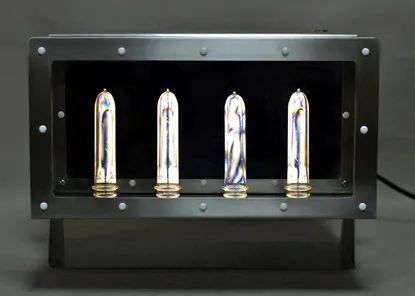Table of Contents
Introduction
Detecting defects in PET preforms is crucial for ensuring the quality and reliability of PET products. One effective method for identifying these defects is through the use of polarized light. This technique is both precise and efficient, allowing manufacturers to identify stress points and other imperfections that could compromise the integrity of the final product. In this article, we will explore the concept of polarized light and its application in detecting PET preform defects. You will learn about the setup and process of using polarized light for inspection, as well as the advantages this method offers.
Understanding how to use polarized light can significantly improve the quality control processes in PET manufacturing. Polarized light inspection provides a non-destructive way to detect stress and other defects, which can prevent potential failures and ensure customer satisfaction. By the end of this article, you will have a comprehensive understanding of the polarized light inspection process and how it can benefit your manufacturing operations.
Understanding Polarized Light
What is Polarized Light?
Polarized light is light that has waves vibrating in a single plane. Unlike ordinary light, which vibrates in multiple directions, polarized light is filtered to vibrate in only one direction. This unique characteristic makes it an invaluable tool in various scientific and industrial applications, including the inspection of PET preforms.
How Polarized Light Interacts with PET
When polarized light passes through a PET preform, it interacts with the material’s molecular structure. Areas of stress or defects within the preform cause changes in the light’s polarization, which can be detected using a polarized light viewer. This interaction highlights imperfections that are otherwise invisible to the naked eye, allowing for precise detection of potential issues.
Common PET Preform Defects
Types of Defects
PET preforms can exhibit several types of defects, including:
- Birefringence: Variations in refractive index due to internal stress.
- Crystallinity: Uneven distribution of crystalline structures.
- Contamination: Foreign particles embedded within the preform.
Causes of Defects
Defects in PET preforms can arise from various sources, such as:
- Manufacturing Errors: Inconsistent processing conditions.
- Material Impurities: Contaminants in the raw materials.
- Mechanical Stress: Excessive force applied during production.
Detecting Defects Using Polarized Light
Setting Up the Equipment
To inspect PET preforms using polarized light, you will need:
- Polarized Light Viewer: A device specifically designed for this purpose, such as the PL-P Polarization Light PET Stress Viewer.
- Light Source: A consistent and controllable light source.
- Sample Holder: To securely position the PET preforms during inspection.
Inspection Process
- Prepare the Preform: Ensure the PET preform is clean and free from external contaminants.
- Position the Preform: Place the preform in the sample holder within the polarized light viewer.
- Adjust the Light: Set the light source to the appropriate intensity and polarization angle.
- Observe the Preform: Look for changes in the light pattern that indicate stress or defects.
Interpreting Results
When observing the preform, areas of stress will appear as distinct patterns or colors due to changes in the polarization of light. These patterns can indicate the presence and severity of defects, allowing for precise identification and assessment.
Benefits of Using Polarized Light for Inspection
Accuracy
Polarized light inspection provides a high level of accuracy in detecting internal stresses and defects in PET preforms. The method can identify even minute imperfections that could affect the performance of the final product.
Efficiency
The process of using polarized light for inspection is quick and non-destructive, enabling manufacturers to conduct thorough quality checks without damaging the preforms.
Cost-Effectiveness
Investing in polarized light inspection equipment, such as the PL-P Polarization Light PET Stress Viewer, can reduce long-term costs by preventing defective products from reaching the market and minimizing waste.
Conclusion
Using polarized light to detect PET preform defects is a highly effective and efficient method for ensuring product quality. By understanding how polarized light interacts with PET materials and learning the inspection process, manufacturers can significantly improve their quality control procedures. This technique offers numerous benefits, including accuracy, efficiency, and cost-effectiveness, making it an essential tool in the PET manufacturing industry.
FAQs
1. What is polarized light and why is it useful for inspecting PET preforms? Polarized light has waves that vibrate in a single plane, making it useful for detecting stress and defects in PET preforms by highlighting changes in the material’s molecular structure.
2. What types of defects can polarized light detect in PET preforms? Polarized light can detect defects such as birefringence, crystallinity issues, and contamination within PET preforms.
3. How does polarized light interact with PET materials? When polarized light passes through PET, it highlights areas of stress or defects by causing changes in the light’s polarization, which can be observed using a polarized light viewer.
4. What are the benefits of using polarized light for PET preform inspection? The benefits include high accuracy in defect detection, quick and non-destructive inspection, and long-term cost savings by reducing defective products and minimizing waste.
5. How do I set up polarized light equipment for inspecting PET preforms? Set up includes using a polarized light viewer, such as the PL-P Polarization Light PET Stress Viewer, positioning the preform in a sample holder, and adjusting the light source for optimal inspection conditions.

